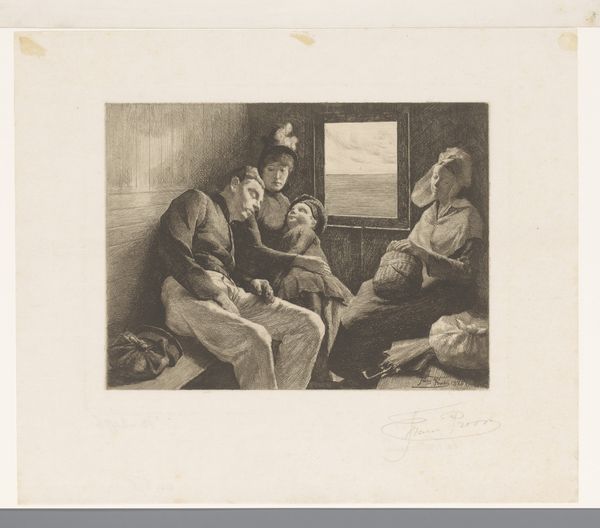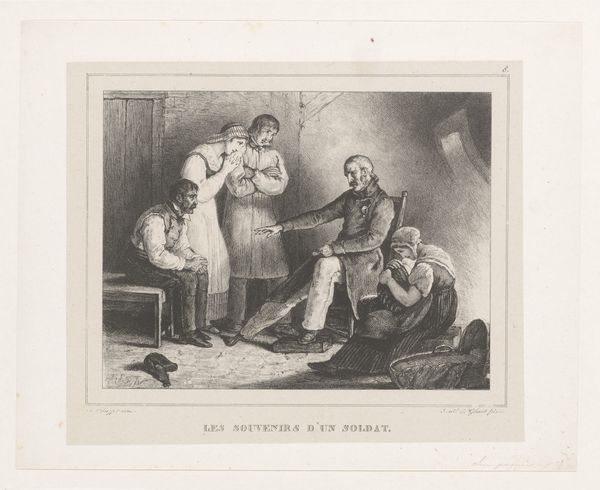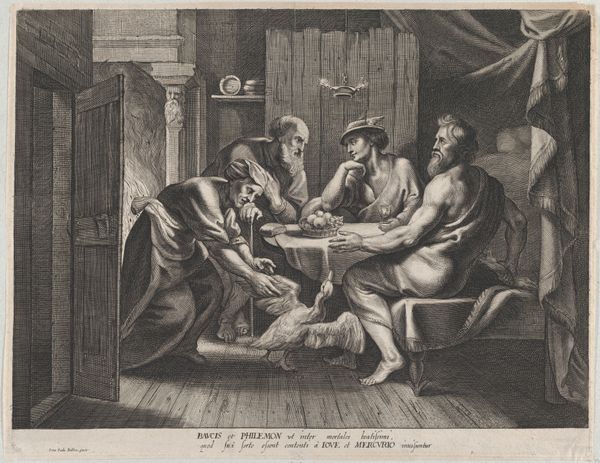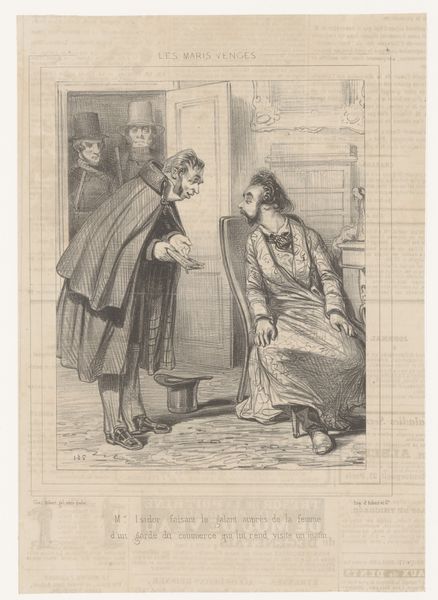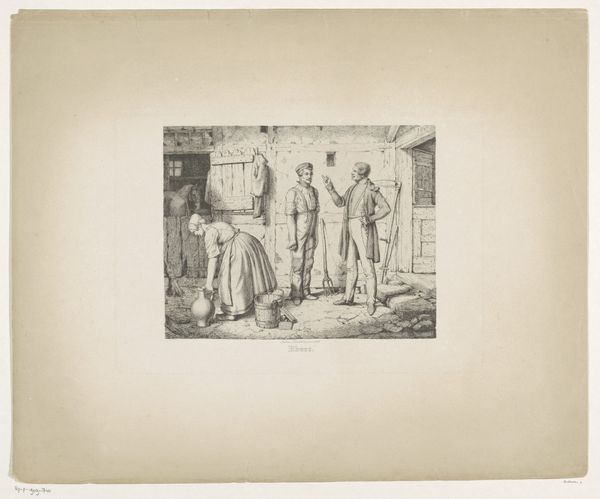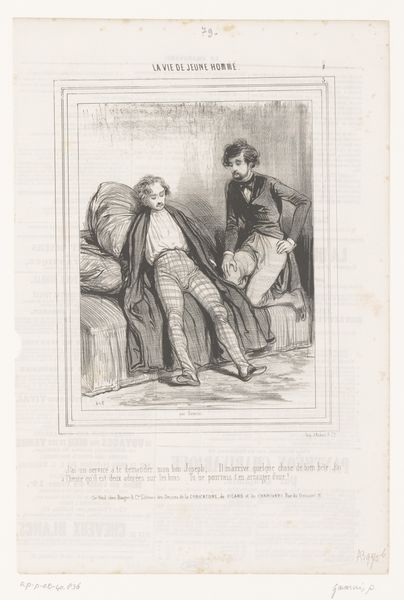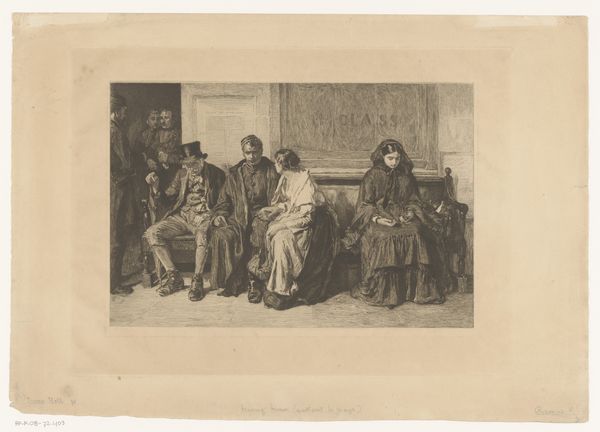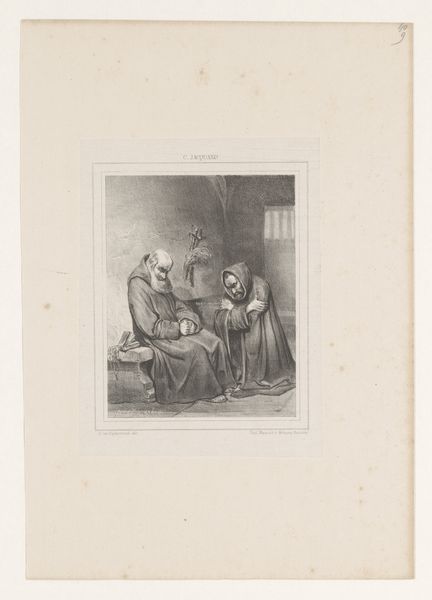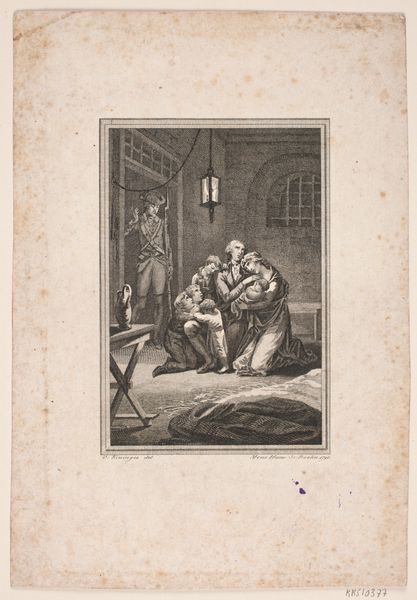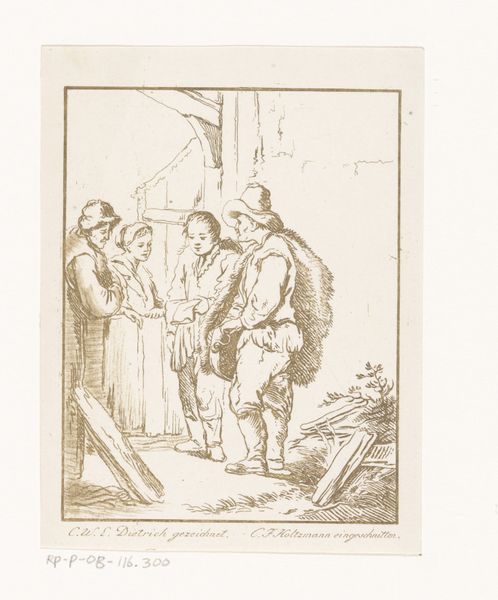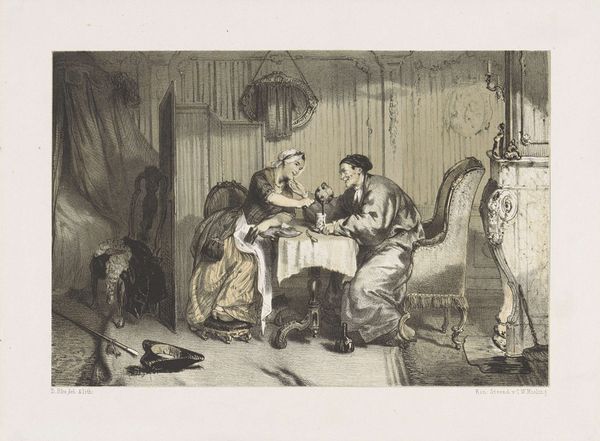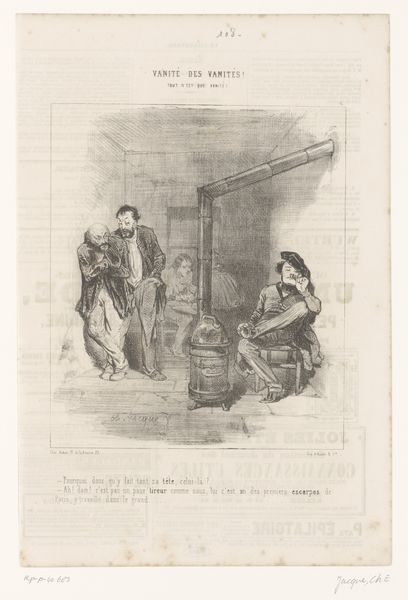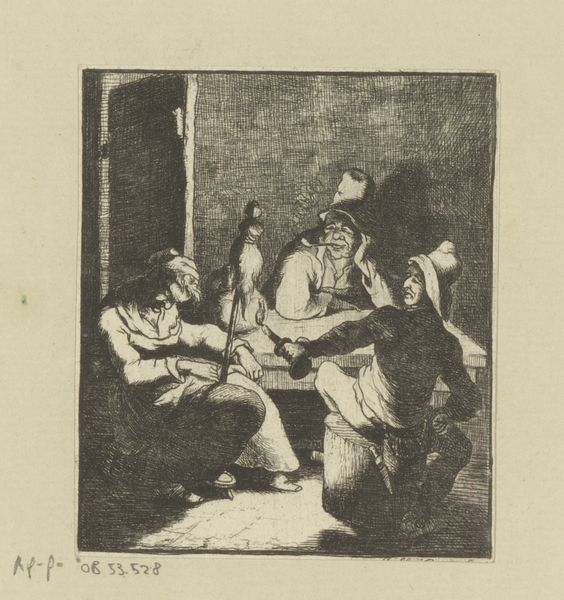
Visit of a Clergyman to Bastide, Sausion, and Collard 1820 - 1830
0:00
0:00
drawing, print, engraving
#
drawing
#
narrative-art
# print
#
pencil sketch
#
figuration
#
romanticism
#
line
#
history-painting
#
engraving
#
realism
Dimensions: Sheet: 11 1/2 × 17 1/8 in. (29.2 × 43.5 cm)
Copyright: Public Domain
Sébastien Coeuré created this print of a clergyman visiting prisoners, sometime in the late 18th or early 19th century. The image speaks to the complex relationship between the Church and the State during and after the French Revolution. Notice the setting: a stark prison cell, probably the infamous Bastille. Three prisoners sit in dejection, while a clergyman gestures towards them. The clergyman's presence raises questions about the role of the church in matters of justice and social reform. Was the church a tool of oppression, or a source of solace for the condemned? The image invites us to consider the social conditions that shaped artistic production during a period of immense upheaval. Was Coeuré sympathetic to the prisoners? Or was he advocating for the Church’s role in maintaining order? To better understand this artwork, we might consult historical archives, pamphlets, and political cartoons from the period, alongside the artist’s biography. Only then can we start to understand the artwork's meaning as a product of its specific social and institutional context.
Comments
No comments
Be the first to comment and join the conversation on the ultimate creative platform.
